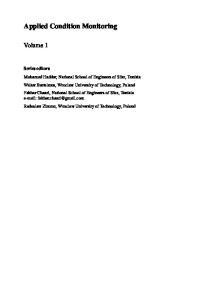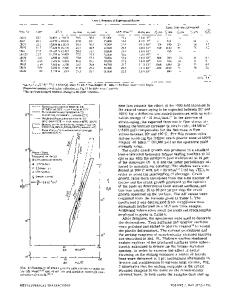Intrinsic fatigue crack growth
- PDF / 2,936,002 Bytes
- 11 Pages / 597 x 774 pts Page_size
- 14 Downloads / 388 Views
I.
I N T R O D U C T I O N AND O B J E C T I V E
THE relationship between macroscopic fatigue crack propagation (FCP) rate (da/dN) and applied stress intensity range* (2dO for aluminum alloys results from a *2tK = Km~x- K~,, where Kmax and Km~. are the applied m a x i m u m and m i n i m u m stress intensities, respectively.
complex interplay among microstructural features, mechanical plasticity-based fatigue damage, environmental degradation, and fatigue crack closure. An ultrahigh purity inert environment is required to isolate mechanical fatigue from environmental damage, since moist air is an aggressive environment for 7XXX, 2XXX, and A1Li-Cu-Mg alloys, tt-5~ Either high R ratio (R = gmin/Kmax) experiments, u,61 or the use of effective stress intensity range (&Reef) from crack closure measurements t4,7-1u** **Generally, AK,n = K,,= - K~.... where K~o~ is the measured stress intensity defined at a point in the loading or unloading cycle below which crack closure is judged to dominate the crack tip stress and strain fields.
are required to isolate intrinsic FCP kinetics from extrinsic crack closure effects. The influence of microstructure on intrinsic mechanical FCP is perhaps most effectively established with inert environment and high R or high constant Km,x experiments. Such results are, however, limited for aluminum alloys, t2,6,71 Experimental studies have addressed benign environment FCP in several aluminum alloy systems. I1-5,7'~~ D.C. SLAVIK, Research Assistant, R.P. G A N G L O F F , Professor of Materials Science and Engineering, and E.A. STARKE, JR., Professor and Dean, School of Engineering and Applied Science, are with the Department of Materials Science and Engineering, University of Virginia, Charlottesville, VA 22903. C.P. BLANKENSHIP, JR., Materials Scientist, is with General Electric C o r p o r a t e R & D , Schenectady, NY 12301. Manuscript submitted November 16, 1992. METALLURGICAL TRANSACTIONS A
An alloy independent da/dN vs AK correlation was proposed for a wide range of materials based on normalization of applied AK by elastic modulus (E). tt21 Crystal structure, yield strength (O-y~),and microstructure did not affect crack propagation when a cyclic plastic strainbased failure mechanism dominated. In this early work, no attempt was made to account for crack closure and the test environment was not an ultrahigh purity vacuum (residual pressure was 1 mPa). t121 Inert environment intrinsic FCP rates for advanced A1Li-Cu alloys are not believed to be affected by microstructure when compared on a AKeff basis for applied R of 0.1 to 0.5 t~~ or on an applied AK basis for high R of 0.5. tlu Well-known difficulties in precisely defining AKeff were not addressed, t13,14,1s] and a range of alloys with unique slip characteristics was not considered in evaluating how microstructure influences intrinsic damage. A1-Li-Cu-Mg alloy microstructures may be altered to accommodate monotonic and cyclic strain either by intensely localized slip or by more homogeneous deformation. Important microstructural f
Data Loading...











